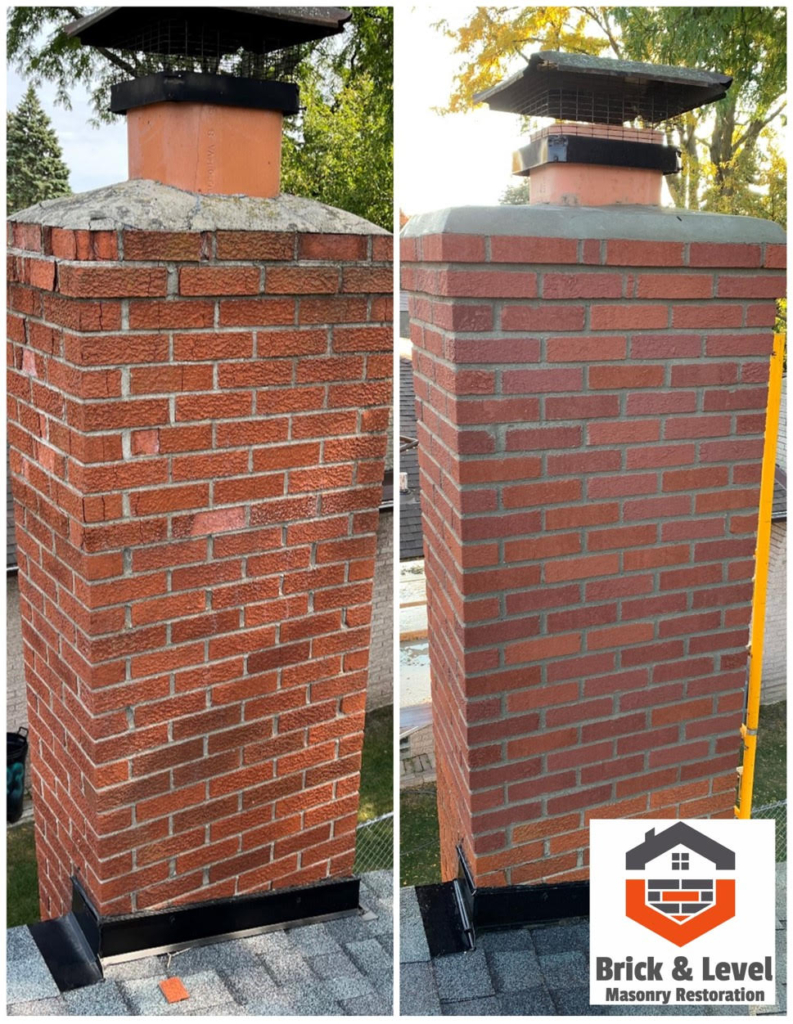Do you know if your chimney needs rebuilding or repointing? Knowing the difference between the two processes is important for making sure your chimney is safe and functional. Rebuilding and repointing are two different processes, each with their own purpose. Rebuilding is when the entire chimney is taken down and rebuilt from the ground up. Repointing is when the existing masonry is removed and replaced with new mortar. Both are important for maintaining your chimney’s structural integrity and preventing future problems. However, there are some key differences between the two that should be taken into consideration before making any decisions. Understanding these differences will help you make an informed decision about which is right for your chimney.
What is Chimney Rebuilding?
Chimney rebuilding is the process of completely tearing down the interior of the chimney, removing the old materials and replacing them with new ones. With this process, the entire structure is replaced from the ground up. This includes the firebox, flue, and sometimes the entire wall. Chimney rebuilding is used when the existing materials become damaged beyond repair, or when the homeowner wants to completely replace the chimney.
What is Chimney Repointing?
Chimney repointing is the process of removing the old mortar from the joints of the masonry and replacing it with new mortar. The joints are the spaces between the pieces of the masonry. The masonry materials are usually the bricks, the mortar that holds the bricks together, the concrete that holds the bricks together, or the stones that are in a natural stone chimney. The old mortar is removed and new mortar is added to the joints to repair damage and prevent future problems. Repointing is more of an aesthetic process as opposed to rebuilding, which is more of a structural process. Tuckpointing is necessary when the front or exposed side of your chimney has lost its original brick pattern. This occurs over time due to exposure to the elements, weathering, and erosion from wind or water. When you notice this happening on your chimney, you must correct the problem immediately before it worsens. Using a special mortar with color-matched sand between them is nice for enhanced aesthetic reasons. Proper pointing will allow moisture to escape so trapped water does not cause any damage.
The Differences between Rebuilding and Repointing
The biggest difference between rebuilding and repointing is that with rebuilding, the entire structure is replaced. With repointing, the existing structure is repaired and maintained. Rebuilding is the most involved chimney repair process. It involves tearing down the interior of the chimney and replacing it with new materials. The entire structure is completely replaced from the ground up. This includes the firebox, flue, and sometimes the entire wall. Repointing is a more minor repair process where the joints are removed and new mortar is added to repair damage and prevent future problems. The existing structure is repaired and maintained.
Benefits of Rebuilding and Repointing
– Safety: Both processes will increase the safety of your home and family by preventing fire and carbon monoxide leaks.
– Performance: Both processes will ensure you’re getting the most out of your fireplace.
– Durability: Both processes will help extend the life of your chimney.
– Energy Efficiency: Both processes will reduce the amount of energy wasted by your fireplace.
Cost Comparison between Rebuilding and Repointing
There is no accurate way to determine the exact cost of each process. It’s best to have a professional come out and take a look at your chimney so they can assess what needs to be done. However, there are some good estimates on how much each process will cost. – Cost to Replace Parts: The average cost to replace the bricks, flue, and other parts is about $2,000. – Cost to Repoint: The average cost to repoint is about $1,000. – Cost to Completely Replace: The average cost to completely replace the entire structure is about $4,000.
When to Choose Rebuilding and When to Choose Repointing
– Condition of the Structure: If the existing structure is in good condition, repointing is the best option. It will maintain the integrity of the chimney while repairing the joints. If the structure needs to be replaced, rebuilding is the best option.
– Condition of the Firebox: If the firebox is in good condition, repointing is the best option. If the firebox needs to be replaced, rebuilding is the best option.
– Condition of the Flue: If the flue is in good condition, repointing is the best option. If the flue needs to be replaced, rebuilding is the best option.
What are the various parts that make up a chimney and its maintenance procedures?
A typical chimney consists of several parts, each of which requires regular maintenance to ensure that it is functioning properly. Here are the different parts of a chimney and some maintenance tips:
Chimney cap: The chimney cap sits on top of the chimney and is designed to keep debris and animals from entering the chimney. It should be inspected regularly to ensure that it is securely fastened and not damaged.
Flue liner: The flue liner is a protective layer that lines the inside of the chimney and helps to contain the heat and gases produced by the fireplace or stove. It should be inspected annually to ensure that it is not cracked or damaged.
Smoke chamber: The smoke chamber is the area above the fireplace and below the flue liner. It should be inspected annually to ensure that it is free of creosote buildup and any other debris that could cause a fire.
Damper: The damper is a metal plate that can be opened or closed to control the flow of air and smoke in the chimney. It should be inspected annually to ensure that it is functioning properly and is not damaged.
Crown: The crown is the concrete or mortar layer that sits on top of the chimney and helps to keep water from entering the chimney. It should be inspected annually to ensure that it is not cracked or damaged.
Masonry: The masonry is the brick or stone exterior of the chimney. It should be inspected annually to ensure that it is not cracked or damaged, and any loose or missing mortar should be repaired.
Flashing: Flashing is the metal strip that is installed where the chimney meets the roofline. It should be inspected annually to ensure that it is securely fastened and not damaged.
Regular maintenance of these various parts can help to prevent chimney problems and ensure that your chimney is safe and functioning properly. It is recommended to have a professional chimney sweep or inspector perform an annual inspection and any necessary maintenance or repairs.
Keep in mind that chimney rebuilding and repointing are two completely different processes. Each has their own benefits, and both are important for maintaining your chimney’s structural integrity and extending its life. To decide which process is right for you, take into consideration the condition of the existing structure, firebox, and flue. If the structure is in good condition, repointing is the best option. If the structure needs to be replaced, rebuilding is the best option. If the firebox is in good condition, repointing is the best option. If the firebox needs to be replaced, rebuilding is the best option. If the flue is in good condition, repointing is the best option. If the flue needs to be replaced, rebuilding is the best option.

